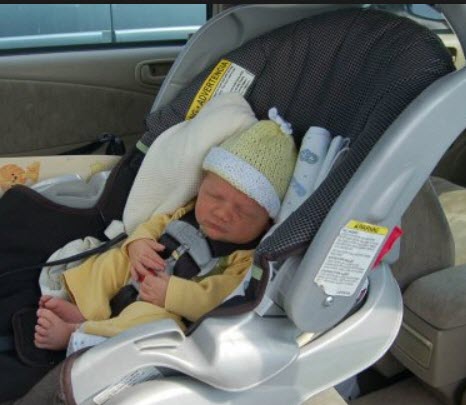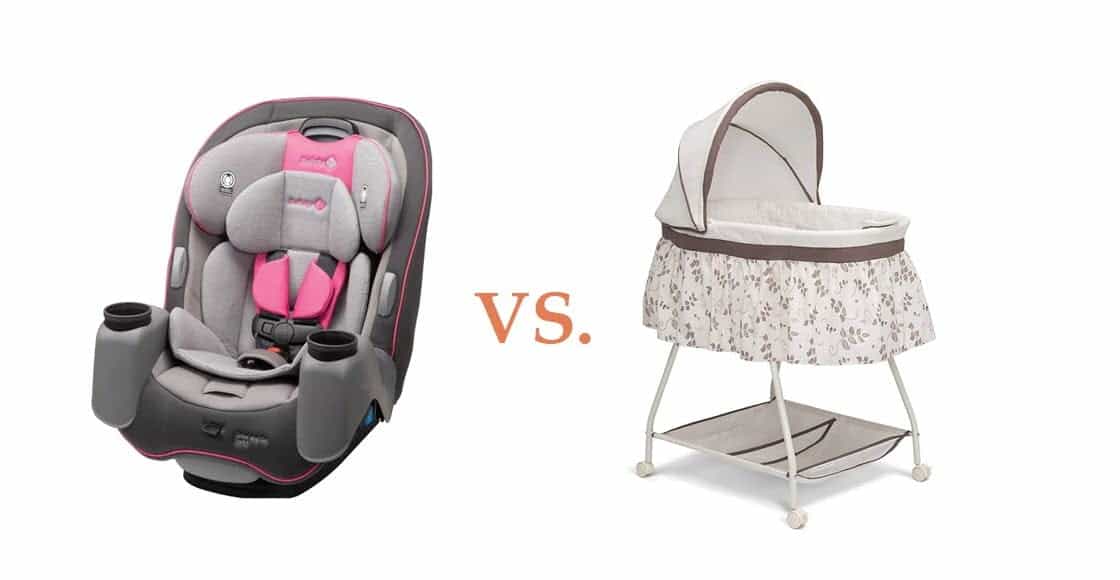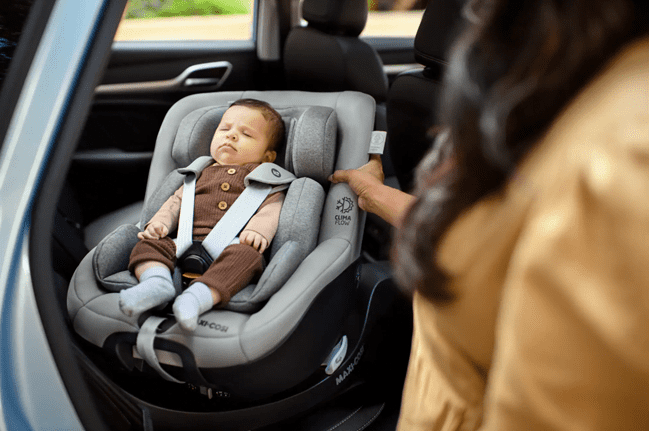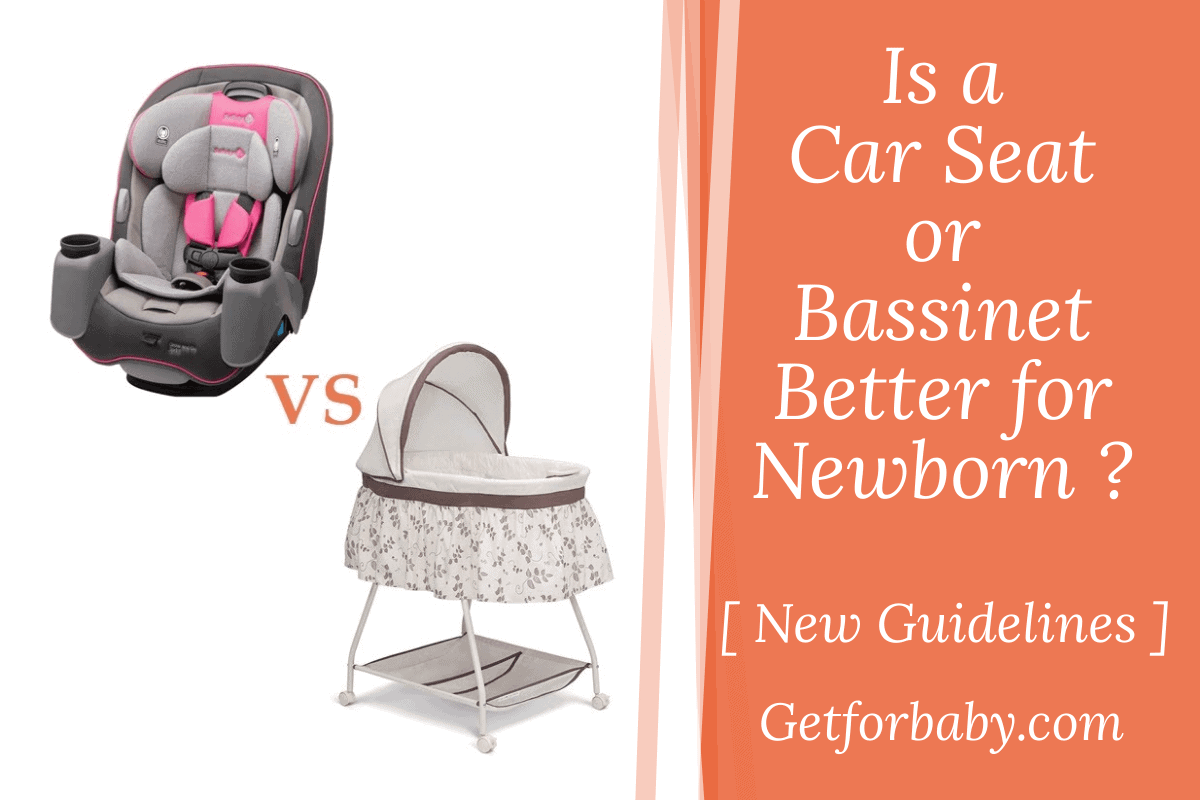When it comes to deciding whether you should buy a car seat or a bassinet, then the choice isn’t easy. You have to take a lot of factors into consideration before making a final decision.
Car seats and bassinets are two different products and designs to serve different purposes.
For example, suppose you want to travel with an infant. In that case, there is nothing safer than car seats.
And if you want to provide a safe and comfortable sleeping environment to infants, then a bassinet is one of the best solutions. But how and why?
What makes them different? Is a car seat or bassinet better for a newborn? Can you use a bassinet as a car seat?
Is it OK for newborn to sleep in car seat? If yes, then how long can a newborn be in a car seat?
All of your queries will be answered in this guide, with strong evidence so that you can make the right decision. So let’s check this.
Table Of Content
Is a Car Seat or Bassinet Better for Newborn Baby?
4 Important Do & Don’t For Car Seats:-
How Long Can A Newborn Be In A Car Seat?
How To Place Newborn In Car Seat
Common Mistakes While Installing Car Seat?
How Long You Can Use Car Seat For Your Baby?
Can You Use A Bassinet As A Car Seat?
Is a Car Seat or Bassinet Better for Newborn Baby?
To know the answer to this question, you need to understand what happens when infants sit in car seats and sleep in the bassinet.
So, let’s check what happens when infants sit in car seats.
If you watch carefully, you will notice that you can’t open a car seat all the way and lay the baby flat (as we can in the bassinet). Your baby will have to lie with her back curved, which is not good at all!

An Incidence of Positional Plagiocephaly [1] study shows that 46.6% of infants face an incidence of plagiocephaly ( known as a flat head ) issues in 7 to 12 weeks.
The incidence of plagiocephaly in infants at 7 to 12 weeks of age was estimated to be 46.6%. Of all infants with plagiocephaly, 63.2% were affected on the right side, and 78.3% had a mild form.
This is due to the pressure placed on the back of the baby’s skull.
The longer they sit in the car seat, the more pressure they have on their backs.
And we all know what that means: a flat spot on the head called Flat Head Syndrome [2]. I don’t know about you, but these statistics are pretty scary to me!
Apart from that, sleep-related deaths are the most common cause of death for infants, not only in baby beds but also in car seats.
In 2015, another case study published in the Journal of Pediatrics [3] revealed that two-thirds of the deaths they analyzed involved car seats.

Two-thirds of the cases involved car seats; strangulation from straps accounted for 52% of the car seat deaths. The remaining deaths occurred in slings, swings, bouncers, and strollers. The study included newborns as well as toddlers.
The study shows that your baby has a higher chance of asphyxiation in a car seat.
Your baby’s neck can flop around in a car seat, giving them a higher chance of suffocating. This is a kind of statistic that keeps me up at night.
Also, the research & evidence ( Erin Mannen, Ph.D.) [4] show that putting the baby to sleep at more than 10 degrees on an inclined surface increases the risk of suffocation — Are Inclined Bassinets Safe?
Mannen and her team suggested that the incline angle on such products is no more than 10 degrees. The lying surface should be flat and rigid (rather than soft and plush-like).
That’s why a lot of top-rated bassinets were recalled in 2019 by CPSC [5]
Also, Consumer organizations said; [6]
Recent recalls of products such as the Fisher-Price Rock’ n Play Sleeper and reports linking inclined sleep devices with 54 infant deaths have highlighted the danger of putting babies to sleep on an incline.
Make sure you adjust their position! Don’t take any chances.
SIDS (Sudden Infant Death Syndrome) incidence also rises when you place your baby in the car seat for even a short nap. Have a look at what APP news said [7]
The American Academy of Pediatrics urges parents not to use sitting devices, including car safety seats, strollers, swings, infant carriers and infant slings for routine sleep. Infants who are younger than 4 months are especially at risk because they might assume positions that can create a risk of suffocation or airway obstruction.
So, Car seats, ironically, have been proven to be hazardous to infants if they are kept sitting in them for long periods.
But don’t freak out. Car seats are perfectly safe [8] to use in the car.

As per the Emily A. Thomas [9], the car is perfectly safe for the baby to sleep in for a short time (not more than 2 hours) until you follow the safety guideline set by the Consumerreports organization [10].
Yes, you can let your baby sleep for short stretches in a car seat, as long it’s used properly,,,,,,,,,,,,,,,,,,First, car seats are essential to keep children safe when traveling in vehicles,,,,,,,,,,,,,,,, Second, car seats—are meant to be used only while you’re with your baby and observing him or her, not for extended or overnight sleep.
When infants sit in the car, at that time, they are spending time on their tummies.
As per Wikipedia [11], Tummy Time helps develop core muscles and builds the connection between her inner and outer core postural muscles.
In 2008, a survey was done by 400 pediatric physical and occupational therapists [12] to figure out the early detection of motor delays in children.
This survey revealed that the babies ‘lack of time on their tummy while awake was the top reason for the increased delays. So, car sear is had its own advantage too.
A car seat is a safety seat specifically designed to contain infants & toddlers while driving. It has a restraining harness and padding and is ergonomically designed to support your baby.
They are also convenient because they come with a handle to make the transition from the car to the house more comfortable. [13]
For instance, if you’re transferring your sleeping baby from a car into your home, it’s okay to briefly place the car seat on the ground. But don’t put it on a high surface like a countertop or a soft surface like a bed or couch.
Car seats also have various settings, so you can adjust them so your baby can sit upright or lie down.
However, don’t forget what I said above. They don’t lie completely flat, so your baby’s spine will curve.
So let me answer your question; Is a Car Seat or Bassinet Better for Newborn Baby?
A bassinet is much better and safer for infants to sleep in than car seats. And, if you are planning to buy something to use in the car, then a car seat is the best and safest option in that particular case because it offers many safety features that the bassinet can’t offer you.
4 Important Do & Don’t For Car Seats:-
| Do | Don’t |
| Keep your baby seat rear-facing in the backseat of the car. |
Never let your infant seat forward, facing in the rear or front row. Reason: Your baby’s spine and head will be better protected from injury while riding when they are facing back. |
| Always choose the right recline angle for your child’s car seat. ( 35-40 degrees ) |
Never install the infant’s car seat reclined too far or in a too upright position. Reason: We must position the neck and head of newborns correctly because they don’t have the neck muscles required to hold the head up. |
| Keep your baby lightly harnessed even when they are napping and outside the car |
Don’t loosen your baby harness completely, or don’t just unbuckle them entirely when moving outside the car. Reason: Light harness cause no damage to the baby, and at the same time, it can avoid unwanted circumstances. It greatly reduces the risk of falling from the car seat. |
| Always remove your baby from the car seat when you arrive at the destination. |
Never let your baby sleep in the car seat for more than 2 hours Reason: When a baby is in a prolonged semi-upright position, it can strain the developing baby’s spine and restrict airflow to the baby’s lungs. |

| Car Seats | Bassinets |
| Keep your baby in the car seat at least through age 12, depending upon the type of car seats | Keep your baby in the bassinet until they are 5 to 9 months, depending upon the type of bassinet |
| Temporary/short sleeping place for baby | Permanent/long sleeping place for baby |
| Not be used longer than 2 hours (when baby sleeping) | Can be used for overnight sleep |
| Should not hang toys with the handle | Can hang toys with the handle |
| Straps are necessary | Straps are not necessary |
| Bedding is not must | Bedding is must |
| Better when you are traveling in car | Better when at home and baby is sleeping |
How Long Can A Newborn Be In A Car Seat?
Bassinets can be used overnight or for a baby’s long hours sleep. While on the other side when you are using car seat you need to keep in mind that you should not let the baby sleep more than 2 hours in the car seat as per the Consumerreports org [14].

But, there is no strong evidence for this that how long baby can stay in the car seat.
However many car seat manufacturer suggest that babies should not sleep more than a 2-hour rule [15] on a car seat, within a time span of 24 hours.
Why not longer:
Staying in same semi-upright position for too long can cause:
- Strain on the baby’s developing spine
- Restrict airflow to the baby lungs.
Babies that get too longer have the greater risk of SIDS. [16].
In order to avoid this, never leave hats or warm clothing on your baby’s body while travelling. If you feel them sweaty or skin feels clammy then immediately remove the cloth layer.
How To Place Newborn In Car Seat
Securing baby properly in the car seat is very challenging. You might think you are doing it very right but here we have provided complete detail how you can place your baby safe in the car seat.
- First thing, you can do for this is to make sure you are using straps in a right way. By doing so, you are avoiding the unwanted movements of the baby and hence the falling of head [17].
- Second thing you should ensure is reclining angle [18]. A newborn should travel in semi-reclined angle, so that the car seat is reclined enough to keep the back of the head and chin off the chest, but never more than the seat allows.
For some extra support you can take two blankets and roll them firmly along the baby’s entire body not just head.
Common Mistakes While Installing Car Seat?
Make sure you are not making these below-mentioned five common mistakes while installing a car seat for your baby
- Turning the seat to the forward-facing position
- Wrong recline angle
- Not installing it tightly enough/ Loose installation
- Not following all instructions provided by manufacturer
- Car seat is not appropriate according to baby weight and age
- Incorrectly/ Poorly using the safety straps
- Using the wrong size car seat for your baby
- Making use of second hand car seat
How Long You Can Use Car Seat For Your Baby?
There are different types of car seats that you can use for different age limits are;
- the rear facing car seat can be used for babies between 1-3 years.
- Forward facing car seat car is suitable for babies between 4-7 years.
- Booster seat is appropriate for babies having age of 8-12 years
For your child’s safety, keep your baby in the car seat as long as the baby fits within the manufacturer weight and height requirements
Some FAQ
————
Can You Use A Bassinet As A Car Seat?
No, you can’t use the bassinet as a car seat because it’s not safe for an infant to sleep on an incline or curved surface. APP recommends using only a flat surface for infants to sleep, and the Consumerreports organization does not recommend letting babies sleep in car seats while you are not using car, to lower the risk of SIDS.
Is It Ok For Newborn To Sleep In Car Seat?
It is fine to let the baby rest or take a short nap in car seats while observing him and only to use in the car. But it is not safe for an infant to sleep in car seats while you are not in the car. Infant can face suffocation while sleeping in car seats because It is not meant to be.
A better and safe place for a newborn to only sleep in is a bassinet.
Is Car Seat Necessary For Newborns?
Infants car seats are crucial when transporting them from one place to another. That’s what they are designed for, and that’s all they should be used. Car seats are safe place for the babies while travelling. However, make sure you are keeping a close eye on your baby and you must have buckled them properly while they are in car seat.
I hope you like our “Is a Car Seat or Bassinet Better for Newborn Baby” guide and found it informative. If you have any queries related to the bassinet or car seat, feel free to contact us.
Now, it’s your turn. Let us know what you think about “Is a car seat or bassinet better for newborn?” in the comment section.
Don’t forget to share the article because sharing is caring!

Dr. Sakshi Patel
Senior Content Writer
Dr. Sakshi Patel, an expert in Human Development and Family Studies, combines her academic knowledge with personal experience as a mother to twins. She provides comprehensive articles and meticulous reviews on baby essentials, offering accurate and up-to-date information to help parents make informed decisions. Read more.
Getforbaby editorial team is committed to providing the most helpful, updated & trustworthy parenting information. When creating or updating the existing content, we rely on credible sources, respected health organizations, professional groups of doctors, & only high-quality sources, including peer-reviewed studies, to support the facts within our articles. Learn more about how we write Getforbaby content.
We believe you should always know the source of the information you’re seeing.
- Wikipedia.org:- Child Car Seat
- Wikipedia.org:- Bassinet
- Quora.com:- Is a bassinet or car seat safe for a newborn?
- Consumerreports.org: –Is It Okay for Babies to Sleep in Car Seats?, October 7, 2019 & Do’s and Don’ts of Infant Car Seat Use, April 22, 2019
- Jpeds.com:- Cribs Are for Sleeping, Car Seats Are for Traveling, April 24, 2015
- Today.com: –Car seat danger: Babies shouldn’t sleep in car seats when not traveling
- Lullabytrust.org.uk:- Car seats and SIDS
- Babysafeltd.com:- 2 Hour Rule
- Kidshealth.org:- Car Seat Safety
- Thecarseatlady.com:- how to position infant in car seat
- Publications.aap.org:- The Incidence of Positional Plagiocephaly, & Infant sleep positioners
- Kidshealth.org:- Flat Head Syndrome (Positional Plagiocephaly)
- News.uams.edu:- Issues with Infant Inclined Sleepers, By ChaseYavondaC, Oct. 17, 2019
- Cpsc.gov:- CPSC Cautions Consumers Not to Use Inclined Infant Sleep Products, October 31, 2019
- wikipedia.org: Tummy Time
- Pathways.org:- Early Motor Delays at Four and Six Months of Age
- Utswmed.org:- Safety tips for top infant products

Harvinder Singh is a founder of Getforbaby and an electrical engineer by profession. He is an expert in evaluating facts, doing in-depth research, and handling technical stuff. He completes his Bachelor in Electrical from Jammu university. Full Harvinder Singh Profile



I think the right time to put an infant in a car seat is when he/she turns at least 3 months before replacing a stroller. That will be safer and he/she will get a good nap during a road trip.
Thanks for sharing your view @Phoebe